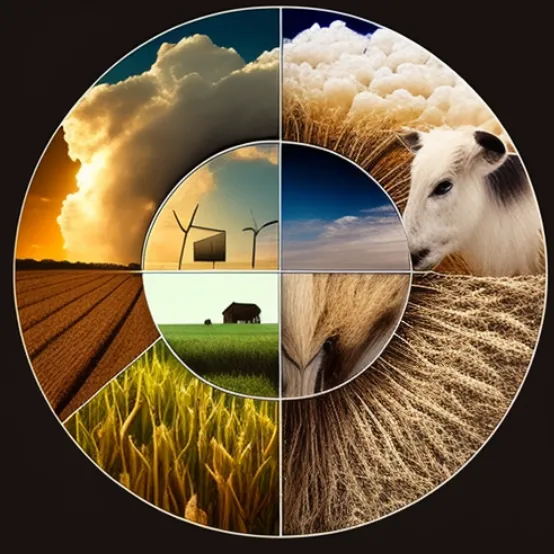

Have you ever thought about where your clothes come from? Or how they’re made? Agricultural fibers (cotton, linen hemp, coir, sisal, ramie) are essential to the textile industry but often go unnoticed. These fibers are critical players in the global carbon cycle. By sequestering carbon dioxide from the atmosphere, they help to stabilize our climate and prevent devastating temperature changes. We’ll explore the complex relationship between agricultural fibers, climate change, and the carbon cycle. We’ll also look at some potential solutions to help mitigate the impact of climate change. Join us as we unravel the complicated connections between agriculture and our changing climate.
Agricultural fibers are an essential part of the carbon cycle.
Agricultural fibers, while often overlooked, are a critical part of the global carbon cycle. They are essential in reducing greenhouse gas emissions and creating a healthy atmosphere. The fibers produced by farmers also help replenish depleted soils and prevent erosion, meaning that these essential substances act as an important bridge between our environment and human interdependence. If we ignore agricultural fibers, we’re neglecting an integral component of the carbon cycle that affects us all. Without them, our air quality would quickly deteriorate to unacceptable levels. Therefore, we must incorporate sustainable practices into our farming methods to keep our planet hospitable for future generations.
The way we manage agricultural fibers affects climate change.
A changing climate forces us to re-evaluate how we manage agricultural fibers, such as cotton and linen. Farmers have often treated these fibers as a commodity to be produced without regard to their environmental impact, reinforcing our reliance on a broken system that is detrimental to our planet and livelihoods. We are quickly reaching the point where transformative action is necessary to manage agricultural fibers sustainably. If left unchecked, this issue could worsen our existing climate problems by releasing further greenhouse gases into the atmosphere. Thus, we must take steps toward developing more environmentally responsible ways of working with agricultural fibers if we want to preserve our resources in the future.
We need to find more sustainable ways to produce and use agricultural fibers.
If we want to make an effort to protect our environment for future generations and build a more sustainable world, then finding ways to produce and use agricultural fibers in a greener way is essential. We have seen the damage done by cutting down too many trees for our textiles, and it’s time for us to make a change toward becoming better stewards of the planet. We need innovative ideas and solutions for finding renewable sources of fibers that are better for the environment while still providing quality products. In addition, we must refrain from using harmful practices to make lasting changes. The task is challenging, but with dedication and hard work, we can develop more eco-friendly ways of producing and using agricultural fibers.
In summary, we must find more sustainable ways to produce and use agricultural fibers to reduce our environmental impact and mitigate climate change.